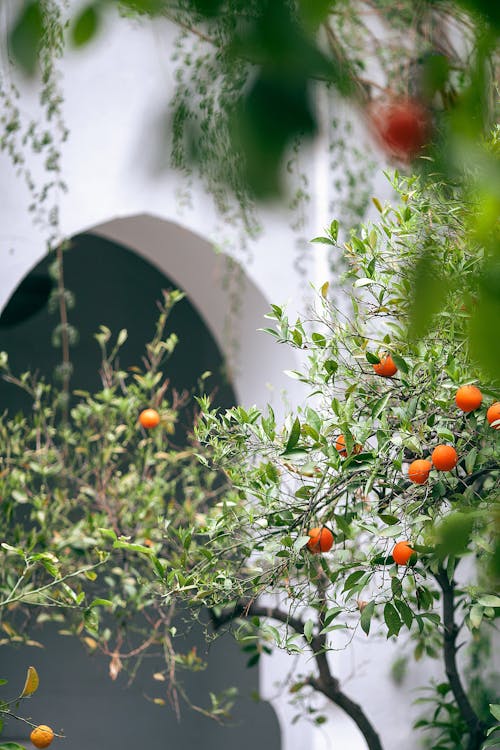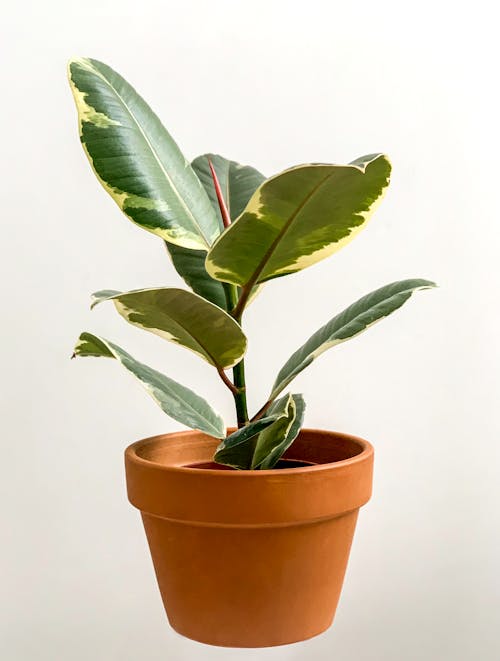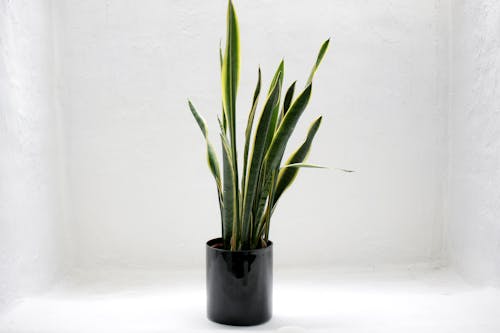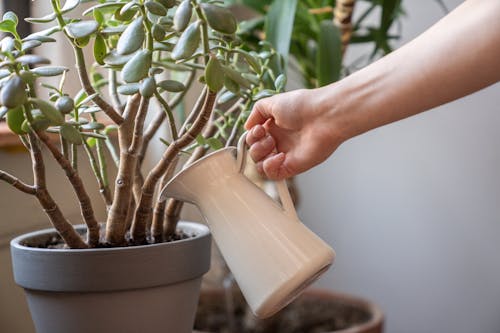
A proverb states that Fortune plants are lucky charms that draw fortune, money, and success to the place they are found.
Although they offer you good fortune, those wonderful plants make every space feel extra active and joyous.
The proper quantity of sunlight, well-draining nutrient-rich potting soil, adequate water, humidity, and hydration, with moisture, and feed growing fortune plants is easier.
It would help if you control the pests and diseases getting to the plant; proper grooming and pruning are necessary for taking care of Fortune Plants. Nowhere quite as tricky as you may imagine!
Fortune plants, often known as Lucky Bamboos, are native to rainforests and thrive best in highly well-draining and damp ground. The little bamboo plant comes from the dracaena family and frequently goes by the name of the fortune plant.
In this article, we will look into fortune plants, their types, and how to care for a plant’s growth. Keep reading below to understand how to take care of fortune plants. There are many ways indirect sunlight can benefit your fortune plant. Indirect sunlight can also sustain moist soil for a corn plant. That said, you must switch between direct and indirect sunlight for your corn plant for an ideal scenario.
It will give you a healthy plant that has good drainage.
How to Care for A Lucky Bamboo Plant?
Table of Contents
Fortune plant is straightforward to maintain, and the plant thrives in interior environments. It is a beautiful indoor plant for an office or a home. Similar to people, plants appreciate one another’s companionship.
These lucky bamboo plants have symbolic meanings in Japanese and Chinese mythology; they represent success, wealth, love, and anything else your heart desires.
Most, though not all, comprise flowering plant species that can grow in containers.
So, below are some instructions for the Fortune Plants, which could both enhance the appearance of your house and bring you good fortune!
Adequate Sunlight
As per fortune plant growers, these plants are similar to a blend of indirect and direct sunlight. The foliage could become scorched due to excessive direct sunlight.
Turn and spin your Lucky Plant frequently for further balanced light distribution, reaching all lucky bamboo and maintaining the correct balance.
Make sure to turn it in every couple of days as necessary, but try not to shift it around too much to avoid damaging it significantly.
When you give it the proper care, Fortune Plants will withstand fluorescent lamps, allowing you to maintain one of these in your workplace.
Soil Conditions
Maintaining a nutritionally rich potting mix with excellent drainage is crucial. Rich sandy soils that drain well and have mild acidity for added porosity and permeability are ideal for lucky bamboo.
An excellent moisture retention (well-drained) soil with activated organic compounds, including perlite and peat for houseplants.
Unless they receive enough oxygen, the roots of plants will decay and die in the pot. It requires a pH with an ideal range from 5.5 to 7.0 in the optimum soil.
A crucial point to remember is that healthy potted plants grow depending on having the proper soil.
Water intake
Giving the Lucky Plant as much fresh water as it requires is the most effective way to keep it healthy. Making sure that the soil dries entirely between waterings is a must.
Some professionals recommend watering the fortune plant periodically so that the moisture can spread more evenly and progressively go to the base.
In fact, if the fortune plant is getting thinner, you would ultimately have to give it more tap water to prevent it from drying out.
Minimal irrigation yet consistent humidity are all that your fortune plants require. Use a container or pot with sufficient drainage holes, so the watering becomes easier, and allow any extra water to be drained promptly. This will also help in preventing root rot.
If you feel that the tap water has contaminants, you must switch to distilled water for good health.
Humidity and temperature
Grow these Lucky Bamboos in an environment of 65 to 75 F for the most outstanding results. The excellent thing is that a Fortune Plant can adaptable and understood.
Even at conditions that are 10 degrees either above or below optimal, they can still function. Also, with regular rain, they continue to thrive despite the relative humidity.
How to Maintain Hydration as well as Moisture for Indoor Fortune Plants?
To maintain the plants and keep the moisture intact, install humidifiers, sprinkle plants with water, add stones, and dab the foliage with a damp cloth. They must always drink plenty of water.
Putting the Lucky Bamboo plant in a cluster with several other plants is yet another way to preserve its hydration. All of these indoor plants would, therefore, naturally transpire to raise humidity.
Fertilizer
Feeding the Lucky Plant is among their primary needs. So adding high-quality compost to the pot that contains organic material, which would be necessary for their development, is necessary.
They stand to gain from that too. It is suggested that you feed these plants once a week.
In any case, you might add high-quality sterile manure, animal waste, compost, or any other appropriate farm yard manure to create a soil mixture that is rich in organic components.
Furthermore, it is recommended to utilize organic fertilizers.
However, try to stay away from using inexpensive fertilizers. This could lead the soil to become too salty, which could damage your fortune plant.
Types of Fortune Plants
The term fortune plant is not limited to single plant specie. Rather, there is a range of lucky plants that come under the umbrella of this category. Below we will talk about some of the most common ones and where to find these easily.
The Money Plant (Pachira Aquatica)

A Pachira Aquatica, sometimes known as Money Tree, is unquestionably at the top of the list for luck. A great present for anyone establishing their new business.
According to Feng Shui, this lucky plant is much more helpful when installed in the “rich corner” of the house.
You must be thinking, where is this wealth corner? The global wealth corner is any room, house, workplace, or garden’s southeast corner. So it would help if you used a compass while standing in the middle of the property to locate the Feng Shui riches spot. The second prosperity corner in Feng Shui is thought to be located in the north.
Tropical trees are simple to cultivate inside, like the Pachira Aquatica. It frequently has a braided stem or thick stem that has been cut off at the head so that future growth can begin there.
You might have better luck and generate more income in your household or in the business if you place a money plant. In addition to being lucky, the Pachira Aquatica is also a superb air purifier.
Citrus Plants

Exotic plants like citrus trees can always be cultivated in pots with a little more care. The finest citrus fruits, like limes and lemons, may thrive for decades in a container and yield plenty of produce.
Citrus trees have a strong fragrance when they are in bloom. Citrus plants of all kinds are regarded as auspicious. Even more so considering that several citrus fruits appear spherical and golden, like coins for riches.
Additionally, your plant gets luckier as it produces more fruit. To honor the Chinese Spring Festival, citrus plants are a common present.
A Rubber Tree (Ficus Elastica)

According to Feng Shui, a Ficus Elastica type promotes money, success, and luck. This domestic good fortune tree is also known as an Indian rubber shrub, fig, or bush. One of the various varieties of household ficus species is the Rubber plant.
Spherical leaves of a Ficus elastica are indicative of wealth and money. The plant promotes luck, plenty, and a boost in riches when it is kept inside. Among the strongest houseplants, Ficus elastica comes under the top ten.
Vanda Coerulea (A Blue Singaporean Orchid)

The blue Orchid is the sole Orchid that blooms in true blue, making it among the most beautiful flowering plants. Regardless of the tint, blue seems to be a cheerful color.
Vandas are more than just decorative items. Feng Shui believes that orchids, particularly the Blue Orchid, have always had the special power to attract luck and wealth in romantic relationships.
Sanseveria Laurentii (Snake Plant)

Interestingly, the snake plant is also known as Belgian curtains and the tongue of a mother-in-law. Since it removes poisons from the atmosphere and absorbs harmful gases out from surroundings, this plant is thought to be a fortune plant.
You must remember to place it in the correct location. Among the strongest plants, you may uncover the snake plants. These prickly beauties can endure practically anything on your balcony, whether inside or outside.
Moreover, it radiates a potent defensive force that defends the people from harmful Chi.
Crassula Ovata (Plant of Jade)

Several individuals throughout history and in many cultures still claim that the Jade Tree will reveal anyone the money. This succulent shrub with tiny white and pink flowers, Crassula Ovata, is sometimes called the jade tree, fortune plant, cash plant, and money tree.
It is distinguished by its dense, meaty, glossy, velvety leaves, which develop into alternating leaves. Deep jade emerald in the shadow with scarlet reflects on just the tips of the leaves while subjected to direct light or full sunshine,
With time, their branches become thicker. This Crassula Ovata (aka Crassula Argentea) would be a nice house addition that many people have lovely memories of while getting older, even if it doesn’t necessarily make one more money.
Basil or Ocimum Sanctum

Ocimum Sanctum, sometimes called Holy Basil, is quite well renowned for its therapeutic and spiritual benefits in Ayurveda, which aid in treating and managing several aches, pains, and illnesses.
In Hindu philosophy, sacred basil, also known as tulsi, has great mythological and theological significance. However, the basis of this relevance lies in its ability to purify, banish negative energy, eradicate pathogens, and promote optimism.
It is additionally claimed that when people meditate in the presence of this plant, their passion is roused, and when they consume it, they feel peaceful and at peace.
Spathiphyllum, aka Peace Lily

The peace lily, a product of tropical Americas, is regarded as a lucky plant. It is capable of eliminating all kinds of environmental toxins.
It is perfect for both offices and homes. Since it provides lovely greenery and clean air, it requires little upkeep while being incredibly attractive.
Lavandula Angustifolia

For good luck, place lavender near the front door. By doing this, a little piece of fortune will blow up and chase away any potential bad luck that could attempt to follow.
In addition to its wonderful scent, lavender is renowned for relieving anxiety, calming the mind, promoting restful sleep, and acting as a disinfectant in household goods.
Golden Pothos or Epipremnum Aureum

In addition to giving wealth and luck, this money plant, in accordance with Feng Shui, also balances life on this planet with the environment.
This, along with the bunches of round and slick golden leaves (which stand in for currency), indicate good fortune. An Epipremnum Aureum possesses strong roots and vigorous development, too. The pleasant vibes emanate from the money plant.
Desert Rose

Adenium obesum, also known as the desert rose, is a magnificent flowering little tree that is considered lucky again for Chinese Festivities and is regarded within Chinese culture as a plant of riches.
The adenium features large, swelling roots out of which luck emanates, signifying fertility and abundance. Pink and red flowers on plants bring good fortune.
The popular name for adeniums is “Desert Rose.” These indeed belong in the “desert” since they originated in the Middle East and Africa, yet they are unquestionably not roses. The more closely related Adenium Obesium species are Alamandas, Frangipanis, and Oleanders.
Eucalyptus Globulus
Eucalyptus is a well-known invigorating herb with a calming aroma. These smell qualities are linked to cleanliness and a new beginning. In addition to its reputation as a powerful air cleanser, eucalyptus also has therapeutic benefits.
Conclusion
These fortune plants are of many types, but the essentials needed to take care of these plants remain the same. If you have a lucky bamboo plant thriving in these conditions, try these techniques for all others.
We hope one of these fortune plants brings luck and prosperity to your house. However, to keep your plant thriving and the luck brimming, one must follow the proper ways to propagate a fortune plant.




